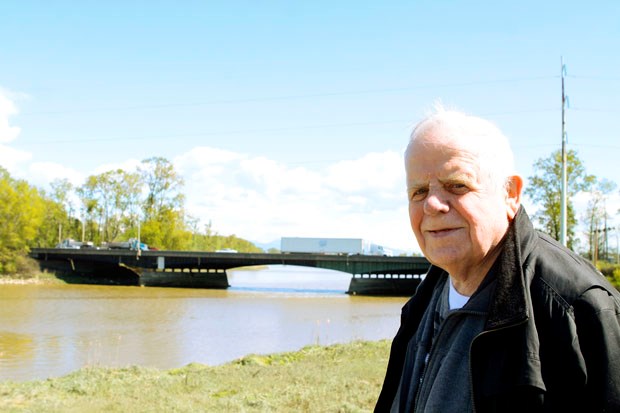Today marks the 60th anniversary of what’s largely regarded as the most significant event in Delta’s history -- the official opening of what’s now known as the George Massey Tunnel.
On Saturday, May 23, 1959, the Deas Island Tunnel welcomed its first vehicles, bringing with it easier access to the rest of the Lower Mainland and ushering in incredible population growth.
The opening of the 640-metre underwater crossing quickly transformed South Delta from a sleepy farming and fishing community to a burgeoning suburb with the usual challenges and sprawl.
Queen Elizabeth II came to Delta in July 1959 for a grand opening celebration for the tunnel, which replaced a ferry service to Richmond that had operated for almost 45 years.
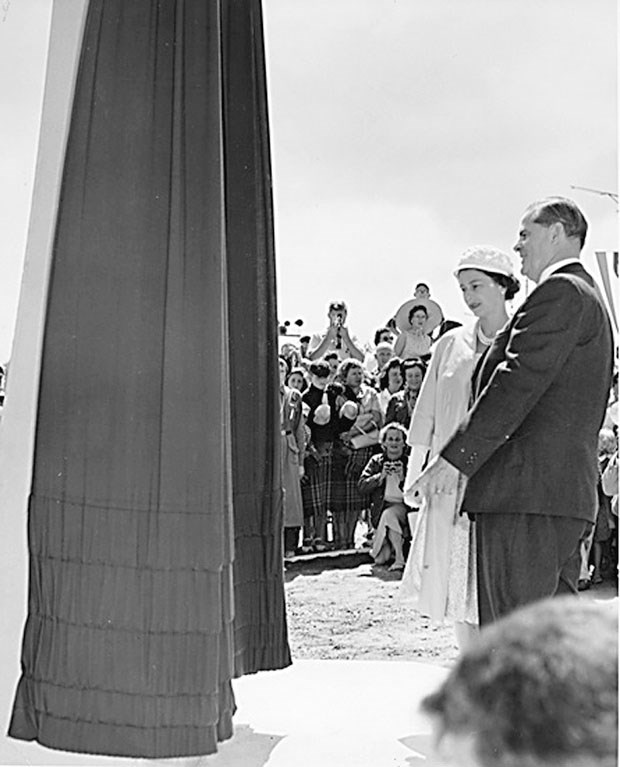
The crossing was re-named the George Massey Tunnel in 1967, three years after Massey’s death. It was tolled until 1964.
It was in 1956 when the Social Credit government announced a tunnel would be built, culminating years of hard work by the Lower River Fraser Crossing Improvement Association, which at its peak had a membership of more than 400.
The group's vice-president was George Massey, who first visualized Delta having a tunnel when he moved here in the mid-1930s. Serving a term as Delta's MLA for the Socreds in the late 1950s, Massey is credited as the driving force, a visionary whose maritime experience proved that a tunnel was preferable to a bridge over the south arm of the Fraser River.
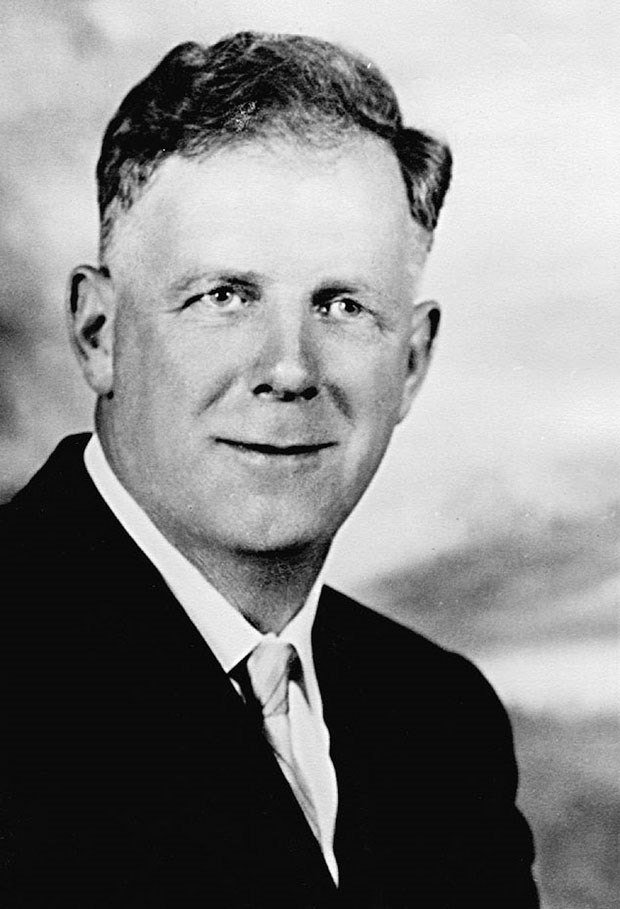
Despite gathering the data proving it could be built here, it look years of lobbying by Massey and others to convince the province to build the $23-million project, which took roughly two years to complete.
“It had its doubters but he proved it could be done. Even when he did so, it still took all those years to get it going,” says George’s son Doug Massey, a Delta community activist and former city alderman.
“My worry is that it’s going to take just as much time or longer for the government to bring another tunnel, let alone make improvements to the one we have. I don’t know why the delay, there’s no need for it.”
In an article in a June, 1947 issue of the Optimist George Massey outlined plans for a tunnel after acquiring a design from the engineering firm Christiani and Nielsen, experienced in tunnel building in Europe, although it took another decade to convince Victoria to build it.
One year after it opened, Massey reported to Delta council that nearly three million vehicles had travelled through it, scoffing at critics who predicted less than a million would use the crossing. He told council the tunnel would get even busier once ferry service between Tsawwassen and Swartz Bay began in the summer of 1960.
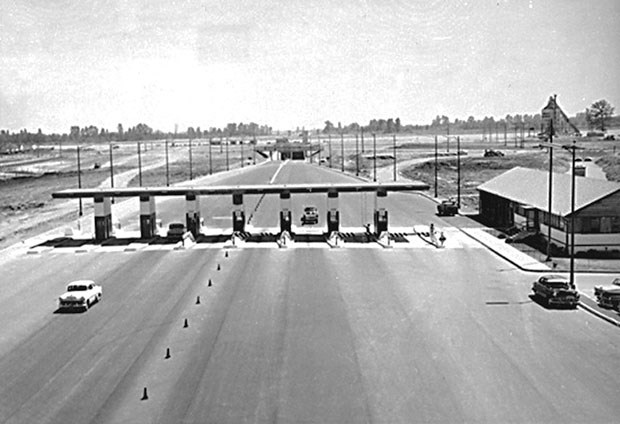
However, not everyone was in favour of the project when it was announced, including the North Delta and Surrey ratepayers' associations, while late Delta Optimist editor Edgar Dunning recalled some in the business and farming communities foresaw problems.
When the tunnel was announced, an elated Clarence Taylor, president of the board of trade, predicted it would usher in a new era of prosperity and growth for Delta.
“The next few years should show an expansion in this district that will be little short of phenomenal. There will be many problems that accompany this expansion but I feel that we are fully capable of dealing with them when they come,” Taylor said.
Premier W.A.C. Bennett also suggested that the tunnel was only the beginning and that expansion all over the province would be phenomenal.
Hundreds of homes were constructed in Delta annually and the school district struggled to build schools to keep pace. Between 1960 and 1971, for instance, enrollment climbed from 3,000 to almost 13,000 pupils. Enrollment eventually hit a high mark of over 18,700 in the early 1980s.
Industry, including port development, as well as the expropriation of farmland, would also come, and the transformative potential of the tunnel was seen early by developer George Hodgins and others.
“I used to take the ferry, and at the time they were building the tunnel, I used to see those sections of the tunnel at the end of No. 5 Road. I decided when that tunnel is completed, they're going to have an influx of people, so I started buying more land,” the late Hodgins told the Optimist in a 2004 interview.
Within 15 years of the tunnel opening, Delta’s population exploded, going from less than 10,000 to more than 70,000.
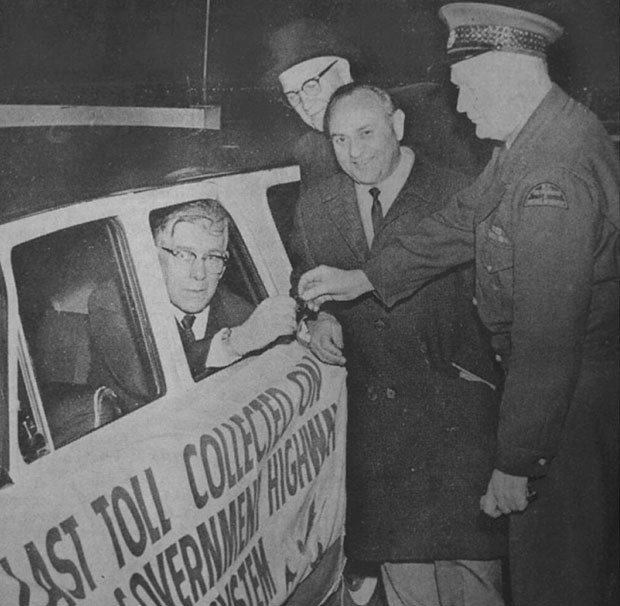
At a celebration banquet in 1959, Lassen Nielsen, head of the firm which designed the structure and supervised its construction, predicted that in the not-so-distant future the tunnel would be too small to handle growing traffic volumes.
Now seeing about 90,000 vehicles daily, the aging tube, which had a counter-flow system installed about 30 years ago to help address congestion, is a traffic nightmare during rush hour, as well as during the inevitable stalls and accidents.
Relief was in sight earlier this decade when former Liberal premier Christy Clark made the surprise announcement a replacement would be built, later announcing a controversial bridge mega-project.
The $3.5-billion George Massey Tunnel Replacement Project, a 10-lane bridge with associated new roadworks, was wholeheartedly supported by Delta, which in a series of reports stated it was a better solution than building another tunnel. It was opposed by other Metro Vancouver cities as well as the regional district.
That opposition frustrated Delta officials, including then mayor Lois Jackson, who said it had more to do with politics and the other mayors wanting the dollars for their own projects.
The Green-backed NDP government scrapped the project shortly after ground was broken, opting to look at other crossing options, including a smaller bridge, a new tunnel as well as keeping the current tunnel as part of a solution.
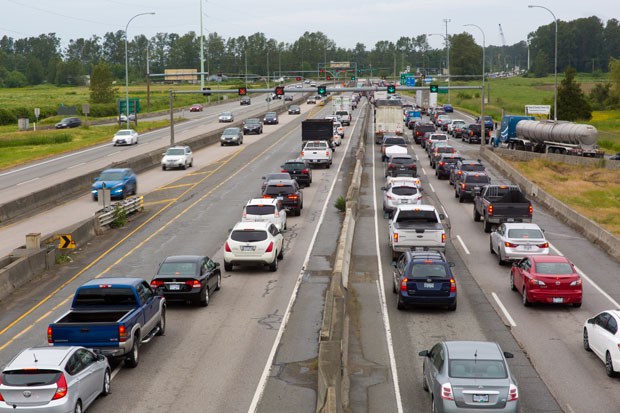
Concerned motorists would be stuck with an inadequate tunnel, Delta Mayor George Harvie formed a group of fellow mayors who came to a consensus that a crossing was needed sooner than later, also agreeing a deep bored tunnel was the best way to go if feasible. It represents a change of heart for Delta. Metro recently put together a crossing task force which includes Harvie and the membership of his group, as well as First Nations’ leaders and others.
“I am gratified that my colleagues across the region also view this as a very important issue,” said Harvie. “Together, through our initial meeting and now going forward under the leadership of chair Sav Dhaliwal as part of the new Metro Vancouver George Massey Crossing Task Force, combined with my role as chair of the Industrial Lands Strategy Task Force, I hope we will be able to convince the province of the urgency of taking immediate action to resolve this terrible bottleneck.”
Harvie has also been stressing for the need for better transit south of the Fraser, something that could be accomplished with a new crossing that could include a provision for rapid bus and eventually rail.
Premier John Horgan was sent a letter from the task force asking for the government, which promised a business case would be prepared by late 2020 on a preferred option, to move things along.
The premier told the media last month, “We've made it pretty clear that we felt that the former government's proposal at Massey should have no federal participation because of a tolling requirement on the former plan was not tenable. We now believe that we're on a good track. The Mayors' Council are united. Every community united that there needs to be a fix for the congestion at Massey. But thankfully, they're all together.”
He added, “The last plan had Richmond off-side. It had other communities off-side. Now they're working in unison. They'll be working with the provincial government, and I'm hopeful (federal) Minister (of Infrastructure and Communities François-Philippe) Champagne as well, so we can get at addressing the Massey challenge. But the former plans did not have federal participation because of the tolling requirements that the former government put in place. I think we'll be able to work in partnership as we are today, and on numerous other projects to address Massey in the short term.”
As far as potentially twinning the tunnel, Doug Massey and other bridge opponents disputed claims the current tunnel is a crumbling structure with just a few more years of useful life, saying the crossing has at least 50 years remaining if properly rehabilitated. Massey believes keeping the existing tunnel in conjunction with a second tunnel has always been the best solution to ease traffic congestion. Richmond city council also pitched a twinning plan.
“There’s a lot you can do right now and improve safety like lights and installing the special tiles inside over the concrete. There’s no reason why this shouldn’t be happening now. I don’t understand why we don’t just get on with it,” adds Massey.
Delta, meantime, has also tied current tunnel concerns to the Port of Vancouver’s proposed Terminal 2 expansion at Roberts Bank, saying approval of a second container terminal must be contingent upon resolving traffic congestion at the George Massey Tunnel.
